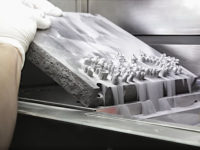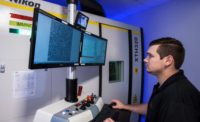One of the last things you want to hear if you’re a manufacturer, distributor, vendor, or supplier is “your shipment is stuck and we have no idea when it’ll arrive.” What do you say to your customer? Do you have a backup plan? These are questions that manufacturers, suppliers, and even retailers are faced with. The need for an alternative solution or backup plan is more prevalent now than ever. So, what changed? Recently, the world has been hit hard with supply-chain disruptions that we have yet to recover from.
Before we get into it, what is a supply chain disruption? A supply chain is a sequence of people, organizations, and activities that are involved in moving the products from supplier to final customer. When there is a change or a crisis (local or global) that negatively affects this, it’s a disruption. With our global situation, we have all become very aware of these disruptions.
The use of additive manufacturing has been on a strong and steady incline for decades. It is now commonly used to produce household, medical, transportation, and even aerospace products. Additive manufacturing has been used in a wide variety of industries to offer innovative solutions to existing problems. When the aerospace industry needed lightweight parts that could perform in high performance conditions, using AM was a natural fit.
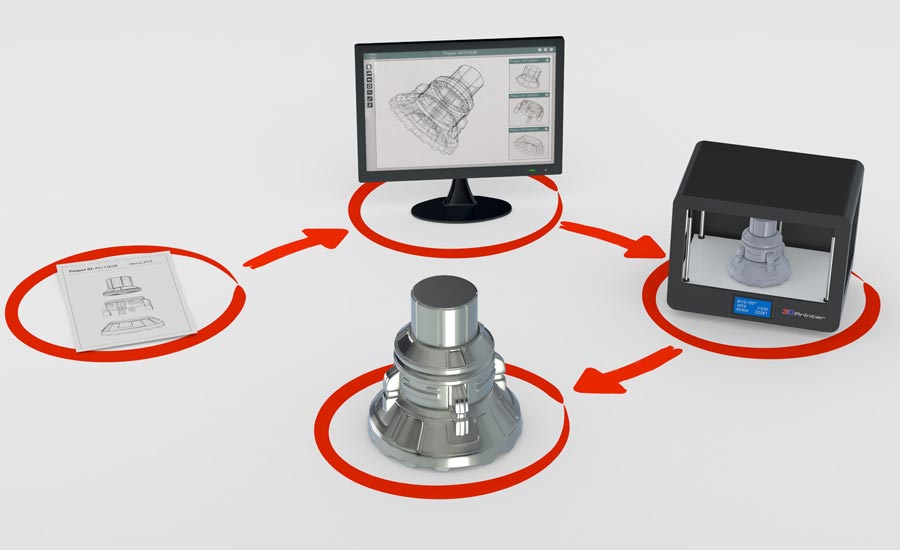
Part consolidation using AM can be done with the right geometry relatively easily. This simplifies a supply chain, reduces production manufacturing steps for fabrication and inspection, and also gives amazing freedom to the design engineers. Critical performance may be the most challenging applications but many examples of noncritical applications also exist.
More than industry-specific issues, AM has helped with worldwide issues. At the height of the COVID-19 pandemic, PPE shortages were causing healthcare staff to reuse PPE and to be incredibly frugal with it. AM was able to step in to produce face shields, face shield headbands, and even oxygen splitters. The rapid, on-demand nature allowed these parts to be designed and made locally, rather than waiting for the overseas supplier to restock and distribute. Along with producing PPE, AM enables social distancing.
Working at a service bureau naturally has machines and workstations spaced out such that social distancing can be easily achieved. With relatively low set-up and printing costs, anyone can buy a printer and start producing parts. One problem, quality can vary or even suffer when this happens. This is because desktop printers typically have had lower quality and more flexible deposition settings, while the bigger systems need an experienced operator to successfully produce parts.
AM has also been used to produce parts for our war fighters on the front line. Trying to get parts to those in a compromised area can be an extreme challenge, which is why using AM to produce parts on-demand can help reduce these challenges. When machines, vehicles, or equipment are down and spare parts are needed, those in the field are faced with a difficult decision; move ahead with broken equipment or leave it behind while waiting for a repair or replacement. This issue became more and more of a concern to the Marine Corps, which led to the idea, “what if we could print these parts ourselves?” Thus, 3D printers and engineers were deployed to train Marines on how to use and maintain the equipment.
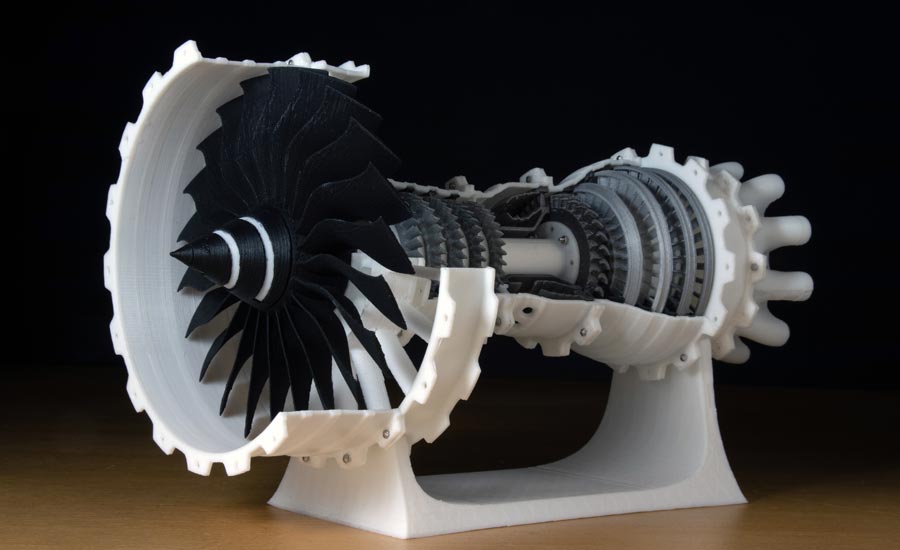
To help condense these printers into a workstation, the X-FAB was born. X-FAB, which stands for expeditionary fabrication, is 20-foot-by-20-foot collapsible shelter that houses these 3D printers, a 3D scanner, and even CAD software! Along with the benefits of 3D printing, the Marines are also using the digital inventory to their advantage. Parts produced with X-FAB are sent to ARDEC (Army Armament Research Development and Engineering Center) and are saved to the digital inventory so they can be accessed and printed by any branch easily. This is one example of how AM is stepping up to combat the supply chain disruptions that have shaken our economy.
Supply chain disruptions have been happening all along, in all industries. To account for the specifics of each industry, using additive manufacturing to help get production back on track has been helping companies manage through this pandemic. AM has a wide array of processes, materials, and finishes that can be used to produce parts and assemblies to their required specifications. The nature of the applications could also help increase the opportunities for applying AM.
For products that use multiple pieces coming from different manufacturers, if one part of the assembly is missing, production will need to halt. Having multiple pieces in an assembly can increase the level of risk to be accounted for. In stock or back-ordered items, with the state of the supply chain, can impact more and more items that now have to be back-ordered, delaying production and increasing storage. These delays will cause production schedules and their dock dates to slip, thus delivering a low rated scorecard from your customer. Other risks like COVID-19 outbreaks, shipping backlogs, or even labor shortages all have to be accounted for as well.
Using AM to produce your parts helps to reduce these risks. Parts delayed in transit are severe threats to just-in-time production. Waiting for parts to arrive from a variety of suppliers can manage disruption and not all suppliers will be great. For those making wonderful products, your materials arrive either on time or good suppliers keep you updated. Other suppliers may have not-so-good products, their freight vendor may be extremely slow and “backlogged.” The more people, steps, and processes added to the production line, the more risk. Using one supplier, rather than five for a singular product used to reduce risk and expense but now may be the key to success.
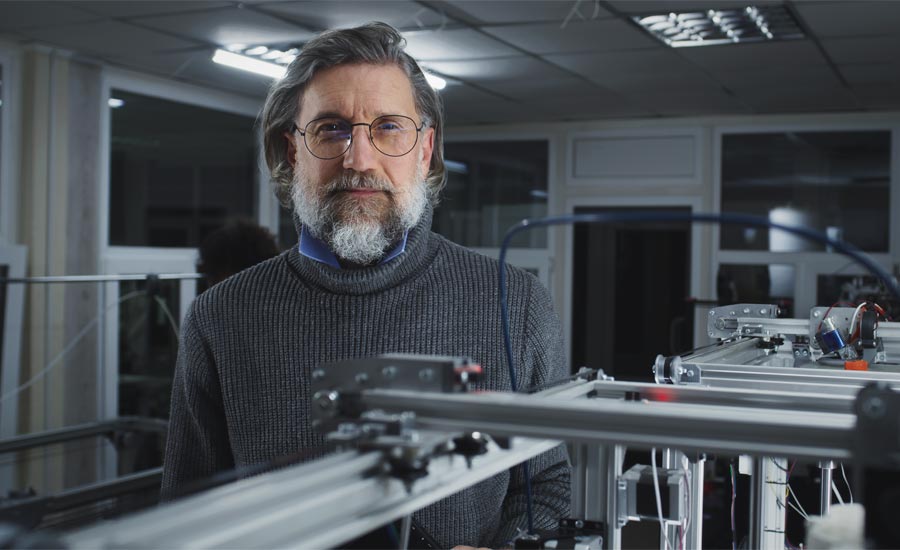
Issues can arise when there is only one supplier of a critical part that is needed. When the part is obsolete, their inventory can become very unreliable. An example of this would be any legacy part. Additive manufacturing can be used with reverse engineering or scanning of the part to create a digital file that can be saved digitally and reused at a moment’s notice at any need to reproduce it. This allows a physical and digital inventory of the part or assembly that is not subject to extensive supply chain considerations. Now maintaining a fleet of vehicles, ships, and planes with legacy parts can be done without worrying about stock. Just being able to produce these parts overcomes a huge problem for both manufacturers and their customers. With this, it is imperative to ensure quality is being perpetuated in terms of consistency and customary traditional quality assurance.
Both suppliers and consumers consistently check quality. Engineers will always come back with revisions to their drawings because they find a way to make them better. Suppliers may revise their work instructions to make a product more efficient either through a way to produce or finish the parts. AM can support the advancement of production and controlled process improvement.
With AM, hefty investments in tooling and retooling can be saved. The ability to create your part or to test the fit and functionality before retooling production can help save time, money, and headaches. Low volume or on-demand production allows for parts to be produced when needed, not because of an exorbitant minimum order quantity. With traditional manufacturing methods, minimum order quantities could range from tens or hundreds of thousands. Being able to test new markets, build or quantify demand and create interest are non-emergency applications for ramping up low volume production. Low volume is AM’s specialty.
Before fully switching production to additive manufacturing, work with an experienced service bureau or contract manufacturer. This can help you quantify technologies, manufacturing readiness levels, and production quality. We can work with your executives, designers, or engineering teams to recommend design modifications, all while still ensuring critical performance features are upheld. These are proven ways to effectively engage AM for your start up, low volume production, or supply chain management applications.


